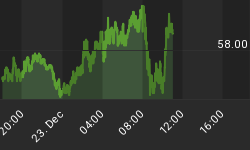U.S. states are now open again for business, but the lines outside of places like TJMaxx might be misleading.
The question now is this: With doors re-opening, which ones are going to stay closed, and will consumer priorities have shifted? Judging by the lines in Michigan, for instance, the bargain hunters are more than keen to get back into TJMaxx, which was slower to open than other big stores.
According to the most recent U.S. Census Bureau report, retail sales jumped 17.7% in May, representing the sharpest one-month jump on record.
That sounds brilliant until you consider that those numbers were still far below spending from the same time last year, even though they included online purchases, as well as those at brick-and-mortar restaurants, bars and stores.
The government’s stimulus check helped boost sales at the end of April and in May, but continued spending will depend on the labor market’s recovery.
The biggest increase from April to May came from clothing stores, which had an increase of 188% after it saw a jaw-dropping nearly 79% drop between March and April. Clothing store sales in May were still down by 42.9% compared to 2019.
“May’s sales numbers were still 6.1 percent below the figures in May 2019 and retail sales between March to May dropped a whopping 10.5 percent compared to the same time last year,” the report said.
The takeaway? According to experts, there is every reason to be cautious because the retail rebound so far has been uneven. Large corporations, such as Walmart and Home Depot are faring much better than small businesses.
According to a survey by the National Bureau of Economic Research, just 30% of thousands of small businesses expected to survive a four-month lockdown.
Similar findings show up in a new study conducted by American universities projecting that more than 100,000 small businesses in the United States have permanently shut their doors since March.
States are still moving fast to reopen shops and other businesses, and in some areas, the wearing of face masks has become a bit of a culture war, with the “right not to wear a mask” emerging as a new subject for citizen complaints. This, despite the fact that it doesn’t stray much further than the American, freedom-limiting shopping requirements of “no shirt, no shoes, no service” (and sometimes, no ice cream, no dogs and no guns).
Retail workers are having a hard time implementing new rules such as mask-wearing requirements, not being able to try on clothes, following arrows on the floor, and waiting in lines outside. In fact, it’s become a risky profession, keeping in mind that a security guard was killed last month in Michigan for enforcing the mask rule.
Adding to the stress, is that many stores are now requiring that their workers sign forms saying they won’t sue if they catch COVID-19.
The liability waivers are similar to what President Donald Trump’s campaign is requiring from people who attend his rally in Tulsa, Oklahoma.
Retail worker stress aside, have we now gone from retail apocalypse to … the reverse?
Over the past few years, retail businesses in the U.S. have been on a downward spiral, and the pandemic just kicked it into overdrive. In mid-May, JCPenney filed for Chapter 11 bankruptcy protection and started closing its stores this week. Jeans maker True Religion and luxury department store Neiman Marcus did the same.
In the early 2010s, in the aftermath of the Great Recession, several large retail chains announced plans to shutter dozens of stores. It was expected that the industry would bounce back in a few years, yet the retail apocalypse showed no sign of abating.
In 2017, retailers shuttered a record-breaking 8,000 stores, or 102 million square feet of store space. The year 2018 proved far worse after another 155 million square feet of space followed suit. The staggering rate of store closures that rocked the retail industry continued in 2019, with retailers setting a new record for store closings, a total of just above 9,000.
For this year, Coresight Research predicts that U.S. retailers could announce between 20,000 and 25,000 closures. More than half of those are situated in America’s malls.
And of course, as U.S. states begin the process of reopening, health experts are voicing concerns of a rebound in coronavirus cases.
And indeed, many parts of the U.S. have already witnessed an increase in infections. Even some states that have so far avoided the worst of the outbreak, such as Alaska and Hawaii, are seeing new spikes. With that in mind, any temporary boost to retail via brick-and-mortar outlets may be even more short-lived that we think.
By David Craggen for Safehaven.com
More Top Reads From Safehaven.com:

















